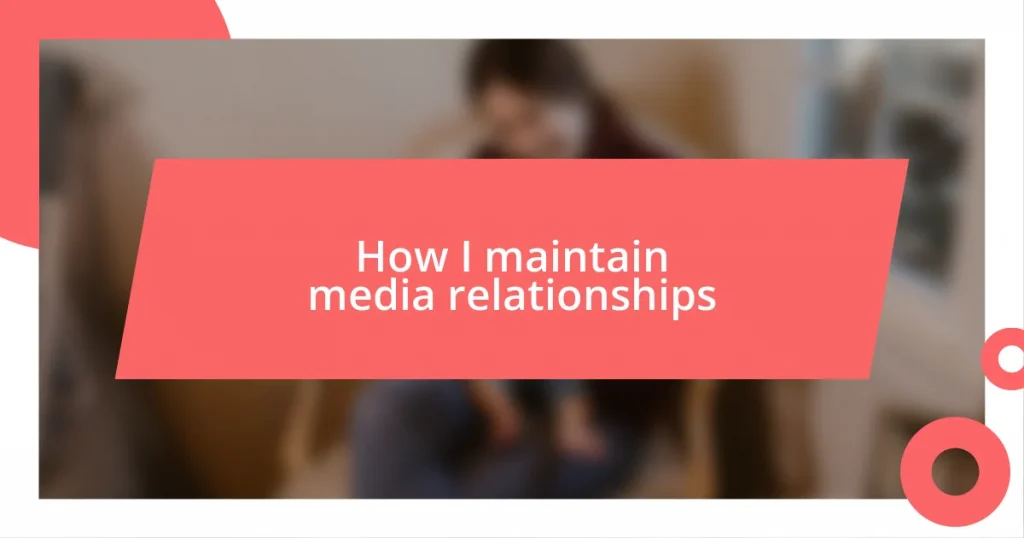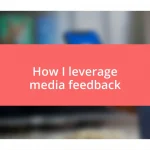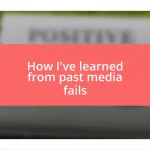Key takeaways:
- Building a media contact list starts with leveraging existing networks and personalizing outreach to make connections more meaningful.
- Craft effective media pitches by understanding journalists’ needs, tailoring content, and including clear calls to action to encourage engagement.
- Maintain strong media relationships through timely follow-ups, open communication during misunderstandings, and fostering trust with transparency in interactions.
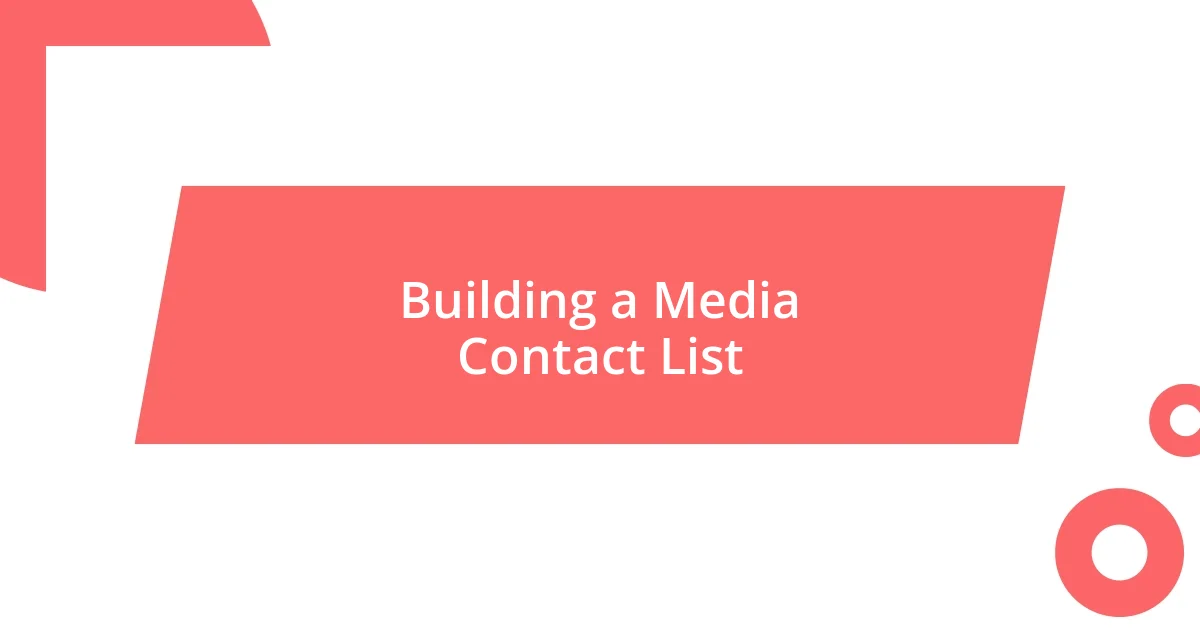
Building a Media Contact List
Creating a media contact list can feel daunting at first, but I find that starting with my existing network is a great first step. I often revisit my past interactions with journalists or editors from previous projects I’ve worked on. Have you ever thought about how powerful a simple LinkedIn connection can be? It’s amazing how a friendly message can spark a genuine conversation and open doors I didn’t even know were there.
As I’ve built my list, I’ve learned the value of personalizing my approach. Instead of just adding names to a spreadsheet, I jot down a few notes on what each contact is interested in. For instance, when I first reached out to a local magazine editor, I recalled her article on sustainable fashion. Mentioning that in my outreach showed that I appreciated her work and wasn’t just another faceless email in her inbox.
When I refined my contact list, I categorized it based on the types of stories or topics each media person covers. This way, I can tailor my pitches effectively. I remember one time I pitched a health-related story to a contact who primarily covered technology. The mismatch was clear once I analyzed my list, proving that a well-maintained contact list allows for better alignment between what a journalist needs and what I can offer. What strategies have you used to keep your list relevant?
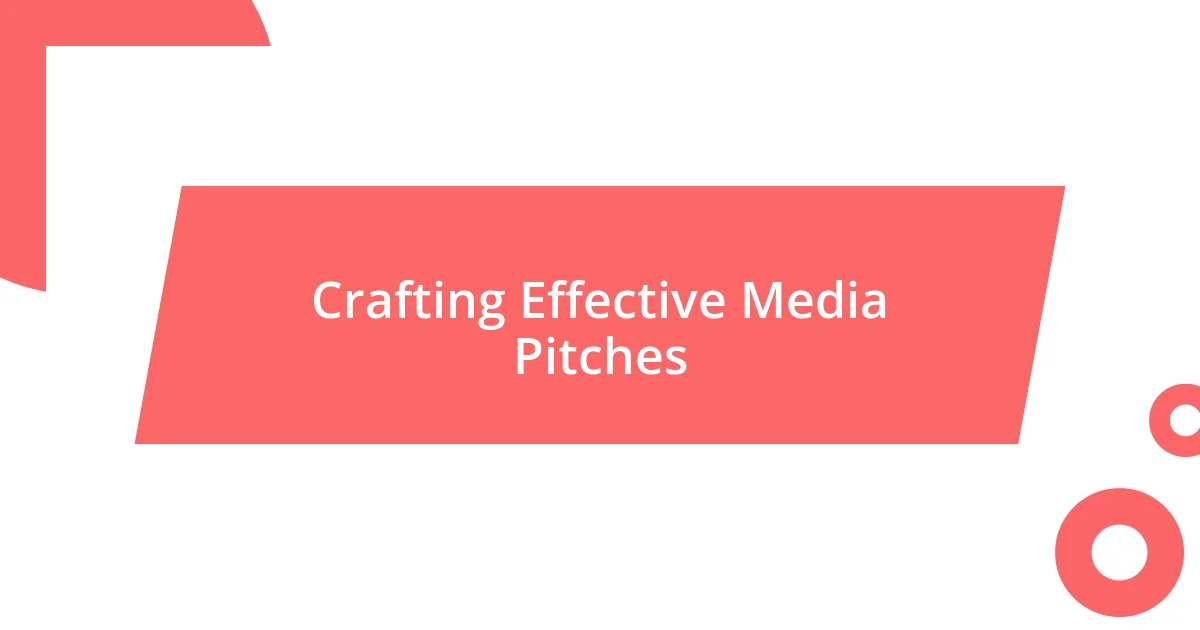
Crafting Effective Media Pitches
Crafting an effective media pitch requires a clear understanding of both the journalist’s needs and the story you want to share. I’ve found that starting with a strong subject line is essential. Once, during a pitch for an environmental initiative, I experimented with several subject lines before settling on “Join the Green Revolution: Your Exclusive Insight.” The response was overwhelming, demonstrating how the right phrasing can capture attention and generate curiosity.
Another crucial aspect is tailoring the content to fit the journalist’s style. I once pitched a vibrant, narrative-driven story to a reporter known for his analytical approach. I knew I had to pivot my perspective, focusing on data-driven insights that aligned with his preferences. He appreciated the effort and even followed up for further information. It’s like dressing for the occasion; understanding their style makes all the difference in how your story resonates.
Lastly, including a call to action in your pitch is vital. A simple prompt, like “Could we schedule a five-minute call to discuss this further?” encourages engagement and shows you’re open to dialogue. I learned this from a pitch that went cold initially but revived after I reached out with a direct question. It’s those little touches that take a pitch from forgettable to impactful.
| Key Element | Description |
|---|---|
| Subject Line | Create an attention-grabbing line that entices the journalist to open the email. |
| Tailored Content | Adjust your pitch style to match the journalist’s preferences for better alignment. |
| Call to Action | Include a brief prompt to facilitate further engagement or discussion. |
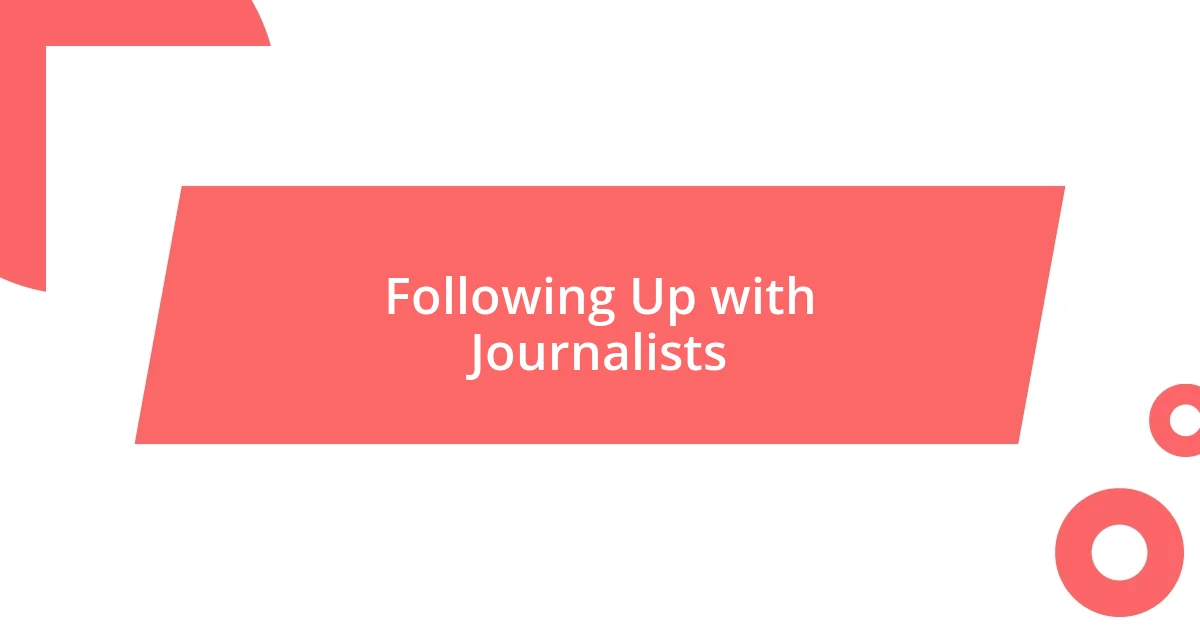
Following Up with Journalists
Following up with journalists can seem tricky, but I’ve found it to be a vital part of maintaining strong media relationships. After sending that initial pitch or email, I usually wait about a week before I reach out again. I remember feeling anxious the first time I did this, but a gentle nudge often proves helpful. It reminds the journalist of my pitch and shows my genuine interest in collaborating.
To structure my follow-ups effectively, I prioritize these key points:
- Timing: Wait a few days to a week after your initial outreach before following up.
- Keep it concise: A short reminder serves best—focus on a specific angle or detail.
- Personal touch: Reference something relevant from your previous communication to show you’re engaged and attentive.
- Open the door for dialogue: Suggest a call or further discussion to enhance personal connection.
- Be respectful: Understand that journalists are busy; a polite tone can go a long way.
I vividly recall a time I followed up on a pitch about a local art exhibit. My follow-up email was brief, but I noted how excited I was to see the artist’s work before the show opened. That simple mention sparked a conversation, and the journalist appreciated my enthusiasm. It taught me that showing genuine passion not only reinforces credibility but also makes me more memorable in the crowded media landscape.
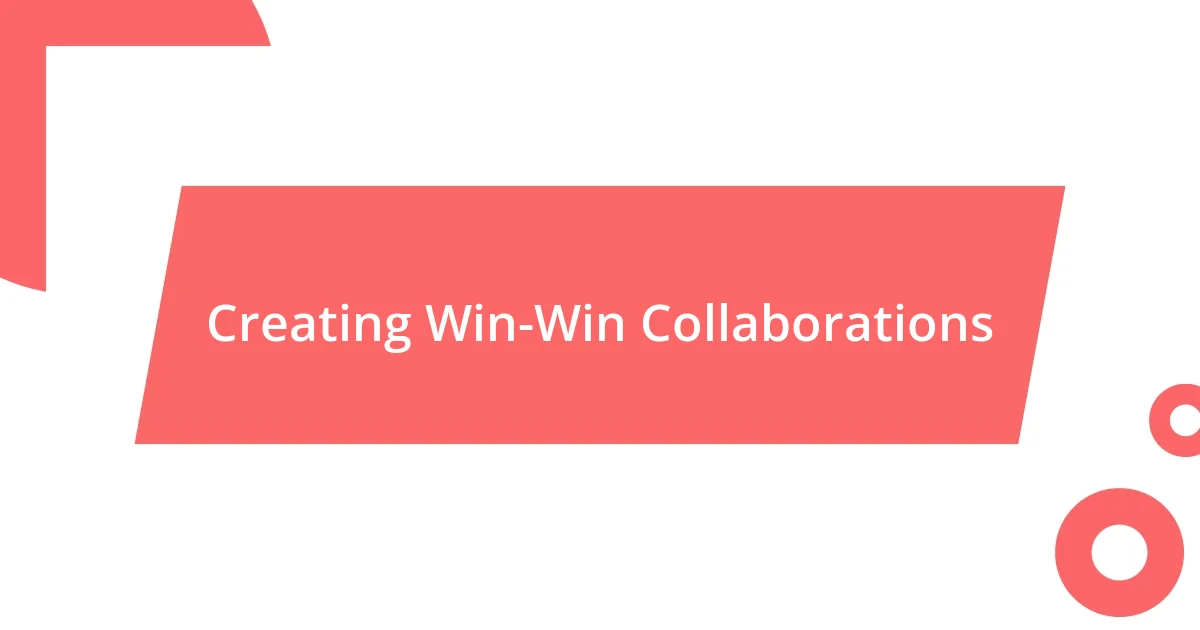
Creating Win-Win Collaborations
Creating win-win collaborations is about aligning mutual interests. When I’ve partnered with journalists, I always aim to understand what they value in a story. I remember collaborating on a project for a community health initiative. The journalist I worked with was passionate about human interest stories, so I highlighted personal narratives from the people impacted by our program. This not only enriched the piece but also fulfilled her desire for depth, forging a stronger alliance between us.
It’s important to cultivate these relationships by sharing not just what I want but also what can benefit the journalist. For example, I once organized a workshop for media professionals where we exchanged ideas and insights about attention-grabbing stories. By offering a space for dialogue and knowledge sharing, I noticed a positive shift in how journalists perceived me; they began seeking my advice for future articles. Have you considered what you can give back to the media professionals in your network? That mindset is crucial for creating collaborations that truly thrive.
Lastly, I pay attention to ongoing interactions post-project. After a successful article about my nonprofit, I sent a personalized note appreciating the journalist’s work. It was a simple gesture, but it led to future stories about our initiatives, demonstrating how valuable gratitude can be in sustaining relationships. When both parties feel valued and understood, those collaborations blossom into long-term partnerships, enriching our shared endeavors.
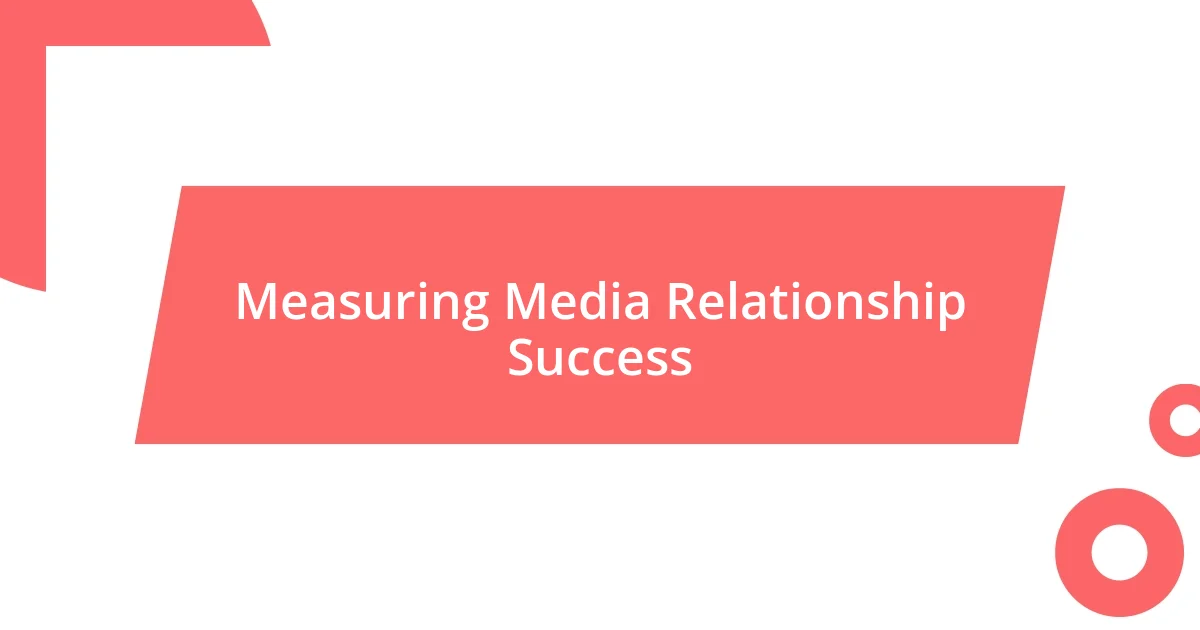
Measuring Media Relationship Success
Measuring the success of media relationships can often feel subjective, but I like to focus on tangible indicators. For me, the number of media placements I receive is a clear benchmark. For instance, after launching a new campaign, I tracked the stories that featured my organization over a quarter. Seeing a notable increase boosted my confidence and reinforced that my outreach strategies were paying off. It’s all about setting goals, right? Are you tracking your own media coverage?
Another way I assess success is through the quality of the interactions. I remember a time when a journalist invited me to contribute as an expert for a panel discussion. That invitation was a huge compliment—it meant they valued my insights. I realized that establishing a conversation rather than a one-sided pitch could be a game-changer. Genuine rapport fosters richer stories, and those moments of collaboration remind me that these relationships are more than just business; they’re about trust and respect.
Lastly, feedback remains a powerful tool for evaluating my media relationships. I often seek out informal reviews from journalists after projects. One time, I asked a journalist how I could provide better resources for their next piece. Their candid response—suggesting I share more trending statistics—helped me refine my future outreach. This practice not only allows me to adapt but also deepens our connection. How do you encourage feedback in your media interactions? I find that openness to learning can elevate both your work and your collaborations significantly.
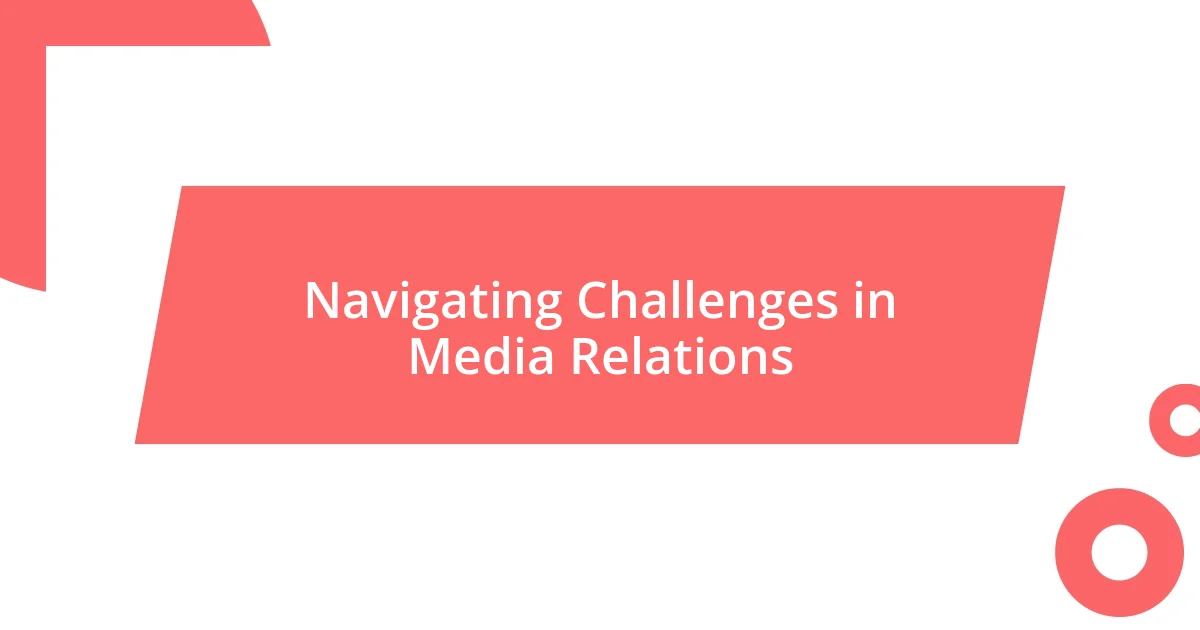
Navigating Challenges in Media Relations
Navigating challenges in media relations often feels like walking a tightrope. I remember a particular instance when a journalist misinterpreted my intentions in a press release. Instead of getting defensive, I reached out to clarify my message. This open line of communication not only resolved the misunderstanding but also opened the doors to more meaningful conversations in the future. How do you handle misunderstandings in your media relationships? It’s worth considering proactive communication as a tool to bridge these gaps.
Sometimes, timing can present a significant hurdle. There have been times when I’ve pitched a story idea that felt like pure gold, only to find out that it clashed with a breaking news event. Instead of abandoning the idea, I adjusted my approach, waiting for the right moment to reintroduce it. This taught me that patience is key; sometimes all you need is to read the room. Have you ever faced a timing challenge? I believe it’s about recognizing the rhythm of the media landscape—adaptation can turn challenges into opportunities.
Lastly, I often encounter skepticism when engaging with new journalists or outlets. Initially, they might see me as just another PR person trying to get coverage. To counteract this, I focus on building trust through transparency. In one instance, I shared our annual results during a casual coffee meet-up rather than just providing a press kit. This genuine approach not only led to a thoughtful feature but also transformed our relationship from mere acquaintances to colleagues. How do you establish trust with new media contacts? From my experience, authenticity really does set you apart in fostering these essential connections.










